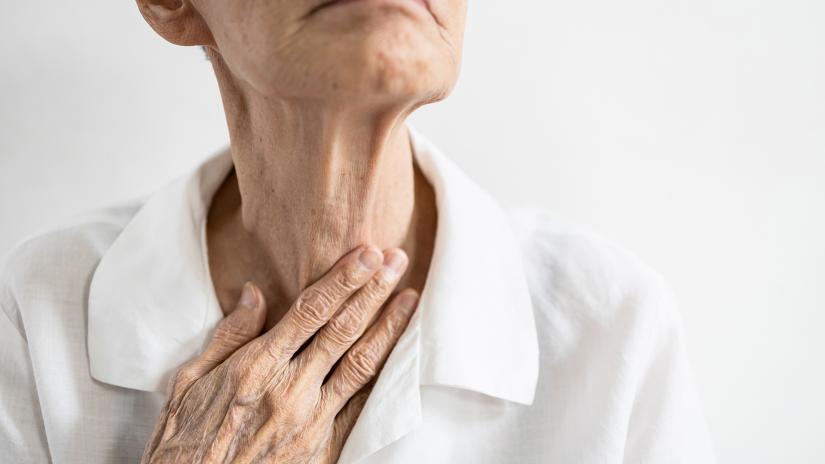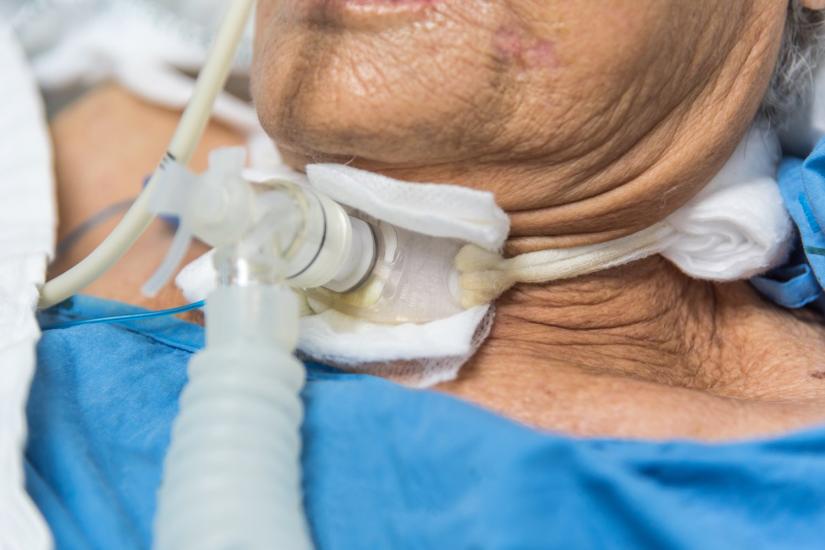
When Dr Amy Freeman-Sanderson was in the early years of her speech pathology career, she found herself caring for a patient who was critically ill. Medical equipment that was supporting his lung function had left him unable to communicate with his loved ones.
“I provided an intervention to restore his voice, and we called his wife,” says Dr Freeman-Sanderson, a clinical speech pathologist in the UTS Faculty of Health.
Later, she said to me, ‘You have no idea what this means, to be able to have a conversation and actually hear my husband’s voice’. And I just thought, why can’t we improve communication more for these patients?
That experience has been one of the guiding forces behind Dr Freeman-Sanderson’s vast program of research, which is focused on optimising communication and swallowing function for patients in the acute care setting.
Most recently, Dr Freeman-Sanderson and Professor Louise Rose from Kings College London led the development of a core outcome set for interventions that enable communication with critically ill adults with artificial airways. These airways, while lifesaving, can have significant impacts on patients’ ability to communicate.
Speech pathologists are often centrally involved in helping to implement interventions that restore this vital function, but understanding which intervention is most effective remains a challenge.
“Core outcome sets aim to standardise what outcomes should be measured in research or clinical trials which aim to test interventions,” says Dr Freeman-Sanderson.
“If everyone working on a particular clinical problem collects and measures the same outcomes, we’re then able to compare the effectiveness of different interventions.”
Drawing on clinical and lived experience expertise
In partnership with 13 researchers from 14 academic and clinical institutions in Australia, the US, the UK and Europe, as well as patients and their families, Dr Freeman-Sanderson and Professor Rose led a four-stage process to develop the core outcome set.
The research team, which included medical, nursing and allied health professionals and a person with lived experience, started by conducting a systematic review of the data, identifying 59 outcomes identified in previous trials of communication interventions for patients in the acute setting.
Next, they engaged in a series of in-depth interviews with 15 patients and family members, a cohort whose voices were absent from many of the published trials. This process identified an additional three unique outcomes.
“The reason we do those interviews is to really deeply understand from patients and families what’s important to them. They may not have had the opportunity to answer this question before,” Dr Freeman-Sanderson says.
After synthesising the data from both sources, removing duplicate outcomes and grouping similar outcomes together, the researchers prepared a list of 32 outcomes that were presented in a two-round Delphi process — essentially a voting activity to narrow down the findings.
Delphi participants included patients and family members who had lived experience of an artificial airway within the last three years, critical care clinicians and researchers. The project was also overseen by a steering committee comprised of medical, nursing and allied health professionals.
Integrating these varied perspectives into the research process was vital to ensuring that resulting outcome set reflected the needs of everyone involved.
“Taking an interprofessional approach is so important in this sort of research. It’s about looking at how we really optimise and enhance the knowledge that exists within the group to create something usable and meaningful,” says Dr Freeman-Sanderson.

Reshaping the future of clinical trials.
By the end of the second Delphi round, 22 outcomes remained. The final stage of the research saw the Delphi participants take part in a series of consensus meetings to finalise the list. The end result was seven core outcomes (see box) that will be shared among the international clinical and research communities for use in future clinical trials in this area.
The same disciplinary diversity that enabled the research will also support its dissemination, says Dr Freeman-Sanderson.
“Having that multinational and multi-professional stakeholder investment also helps dissemination of the core outcome set, because it then goes out via those different professional networks and reaches people working in this space in lots of different countries,” she says.
To date, the core outcome set has been endorsed by the Intensive Care Society UK, the European Society of Intensive Care Medicine and a consumer network called ICUsteps.
The findings were recently published in Critical Care Medicine. Updates will be made on the COMET Initiative, an international registry of core outcome sets, later this month.
This research was supported by funding from the UTS Faculty of Health.
Core outcome set for interventions enabling communication with critically ill adults with an artificial airway
- Changes in emotions and wellbeing associated with ability to communicate
- Physical impact of communication aid use
- Time to functional communication
- Ability to communicate health care needs (comfort/care/safety/decisions)
- Conversation agency
- Ability to establish a communication connection to develop and maintain relationships with healthcare providers
- Acceptability of the communication intervention

